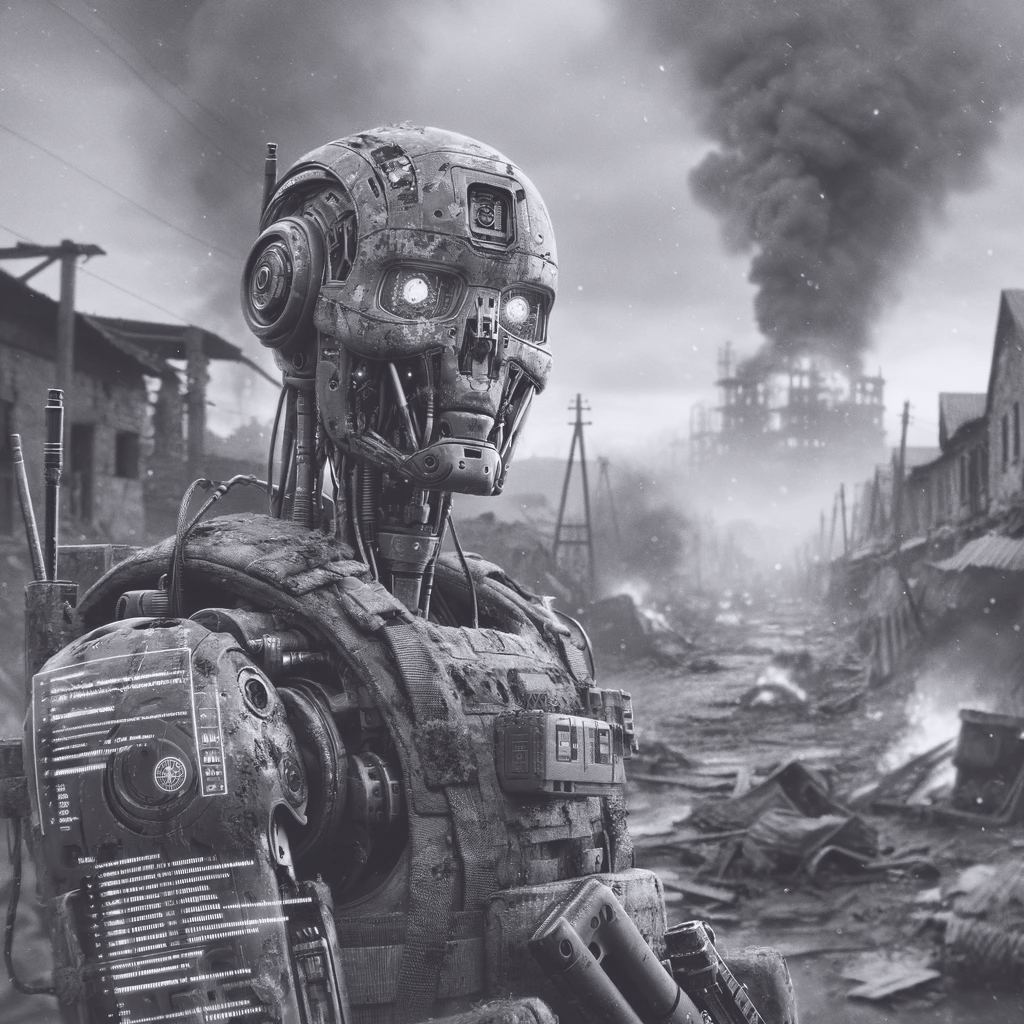AI advances in Ukraine could bring forward killer robots

The ongoing conflict in Ukraine has precipitated the acceleration of an emergent technological paradigm, potentially ushering in the advent of the world's inaugural fully autonomous killer robots, signifying the dawn of a novel epoch in the annals of warfare.
With the protraction of hostilities in Ukraine, the likelihood intensifies that unmanned aerial vehicles shall assume the roles of identification, selection, and engagement of targets, devoid of current human intervention. This trend, observed by a conclave of military analysts, combatant forces, and scholars of artificial intelligence, heralds a step forward in military apparatus as momentous as the advent of the machine gun.
The Ukrainian theatre of war has observed the deployment of semi-autonomous offensive drones and counter-drone apparatus, imbued with artificial intelligence. The Russian Federation has proclaimed the possession of similar systems, though such claims have yet to be substantiated. Yet, we are witnessing the deployment of automatons capable of delivering lethal force independently.

Conversing with The Associated Press, Mykhailo Fedorov, Ukraine's Minister of Digital Transformation, conceded that the emergence of fully autonomous drones represents a logical progression in armament development, with substantial research and development being conducted in this ambit.
Lieutenant Colonel Yaroslav Honchar of Aerorozvidka, a nonprofit dedicated to the innovation of combat drones, accentuated the superiority of machine processing over human cognition in the rapidity of decision-making. While current Ukrainian military doctrine eschews the employment of entirely autonomous lethal weaponry, the potential for a doctrinal shift remains an open question, as Honchar remarked, due to the unpredictability of future military exigencies.
The potential for the Russian acquisition of autonomous AI from external sources, such as Iran, looms, though the current drone models supplied to Ukraine, while destructive, lack significant intelligence. However, with trivial effort, Ukraine could enhance its semi-autonomous drones to full independence, thus rendering them impervious to battlefield jamming, as posited by their Western manufacturers.
The attainment of full autonomy in drones such as the American Switchblade 600 and the Polish Warmate, which presently require human operators for target selection, is within reach. The Chief Executive Officer of AeroVironment, Wahid Nawabi, asserts that the requisite technology is extant, pending policy reform to extricate the human element from the operational loop.
The quandary of ensuring the reliability of such technology to avert the inadvertent loss of non-combatant lives remains contentious among defence ministries and experts alike.
The United Nations has failed to enact international statutes governing military drones, with major powers, including the United States and Russia, dissenting from a prohibition. The implications of such armaments, as elucidated by academic and campaigner Toby Walsh, are profound, with the potential for unchecked proliferation posing a grave concern.
The development of drone swarms by multiple nations, capable of deadly synchronised attacks, posits a future of warfare where victory is contingent upon aerial automatons, echoing the prescient musings of President Vladimir Putin, who surmised a scenario where the obliteration of one party's drones by another's leads inexorably to capitulation.

Ethical Considerations
In the midst of technological advancements that have the potential to redefine the parameters of warfare, the accelerated development and potential deployment of artificial intelligence (AI) in combat scenarios must be approached with utmost caution and ethical consideration. The notion of AI-controlled weapons systems, which include fully autonomous drones capable of lethal action without human oversight, is not only fraught with moral quandaries but poses a clear and present danger to global security and humanity at large.
The emergence of AI-driven warfare technologies brings to the fore a Pandora's box of ethical implications. The primary concern is the delegation of life-and-death decisions to algorithms. Such a profound responsibility, traditionally the remit of human judgment, raises the question: Can AI, irrespective of its sophistication, truly understand the value of human life and the moral weight of its actions? The absence of compassion, empathy, and the ability to comprehend complex human contexts in AI systems could lead to disastrous outcomes in the theater of war.
The risk of malfunctions or programming errors leading to unintended casualties cannot be overstated. History is replete with examples of technology failing or being subverted; when the stakes are lethal autonomous weapons, the consequences of failure are catastrophic. Furthermore, the potential for AI weapons to be hacked, repurposed, or commandeered by malicious actors introduces an additional layer of risk that could destabilize not just individual nations but entire regions.
The argument that AI weapons could reduce casualties among combatants is a double-edged sword. While there may be a reduction in military personnel's direct exposure to danger, the impersonal nature of drone warfare and the potential for unaccountable killing machines to make irreversible decisions is a step towards a dehumanized form of warfare. This not only desensitizes the act of killing but also distances the aggressor from the consequences of war, potentially lowering the threshold for engaging in conflict.
The international community's inability to reach a consensus on the regulation of AI weaponry underscores the complexity and urgency of the issue. The lack of a comprehensive legal framework governing the use of autonomous weapons systems is a glaring omission in international law, leaving a void that could be exploited by nations and non-state actors alike. This regulatory vacuum could lead to an arms race, with AI weapons proliferating at an uncontrollable rate, making the world a far more dangerous place.
Moreover, there are grave concerns about the accountability and attribution of actions taken by AI-driven systems. In instances of wrongful killings or war crimes, who is to be held responsible? The programmer, the manufacturer, the military commander, or the AI itself? Without clear lines of accountability, justice in the event of misconduct becomes an elusive concept, and the principles of international humanitarian law risk being undermined.
The vision of future wars being fought by autonomous drones, as speculated by some, paints a bleak picture of conflict where human oversight is reduced to a mere formality. The prospect of machines with the capacity to make life-or-death decisions devoid of human compassion or contextual understanding is a harrowing one. Such a scenario is not only ethically indefensible but also poses a fundamental threat to human dignity and the principles of warfare that have, albeit imperfectly, sought to preserve it.
The development and potential deployment of AI in warfare demand a global pause and a reassessment of our collective trajectory. Humanity must not cede its moral compass to the hands of machines. Instead, it is incumbent upon the international community, policymakers, and civil society to champion the cause of banning lethal autonomous weapons systems. The alternative is a future where the sanctity of human life is entrusted to the cold logic of algorithms, a future where the fog of war is not just a metaphor but a literal cloud of unaccountable, mechanized, and potentially uncontrollable agents of death.




